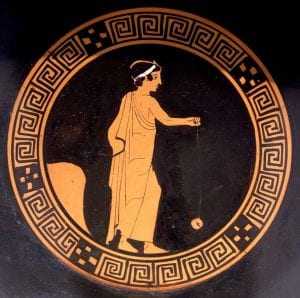National Yo-Yo Day
For over 30 years June 6th has officially been recognized as National Yo-Yo Day.
This day to honor the Yo-Yo, was placed on the late Chicago businessman Donald F. Duncan’s birthday. America owes its fascination with the yo-yo to Mr. Duncan.
The National Yo-Yo Museum in Chico, California is celebrating this day in the museum with yo-yo demonstrations, guided tours, prizes and treats.
Open year around, the museum exhibits yo-yos from all modern eras. Displays of contest awards, sweaters & patches tell an interesting story on a human scale. Also featured is a the step by step transition from the traditional fixed axle to the modern ball bearing axle that is so popular today.
More people are playing yo-yo now than at anytime in history. There are more contests held around the world than ever before. This is an activity that has made the connection from past generations with newer generations.
And it has a day to celebrate that.
What is a Yo-Yo?
At its simplest the yo-yo consists of a wooden axle connected to two wood disks and a length of cotton string looped around the fixed-axle.
At its most advanced a yo-yo consists a threaded steel axle and ball bearing, connected to two machined aluminum disks and a length of polyester string looped around the ball bearing.
How does it work?
The yo-yo gathers its spin from a forceful unwinding throw from the hand to the end of the string. By allowing the yo-yo to spin at the end of the string, tricks can be performed. Then with a tug or a bind, the yo-yo will rewind itself back again to the hand. This is called “yo-yoing.”
Early History

The yo-yo is older than ancient Greece. There is a painted Greek vase from 500 BC that shows a boy playing with a yo-yo. There are also many descriptions of yo-yos in history. Early forms were called different names, as quizzes, bandalores or emigrette.
The word “yo-yo” first appeared in a Filipino dictionary in 1860.
In 1923, Pedro Flores, a man of Filipino descent, began building yo-yos in America. He built the yo-yos by hand, and discovered that America’s youth were fascinated with them. In 1928, Flores built the first yo-yo factory to mass produce the toys in California. Flores had secured financing, set up his own firm and manufactured more than 100,000 wooden toys and trademarked the name “yo-yo.”
Flores realized that people had to be shown how to use a yo-yo before they would buy it. He hired a team of fellow yo-yo masters to demonstrate the toy’s amazing tricks.
After holding many promotional competitions, the yo-yo caught the eye of Donald F. Duncan Sr. who spotted it while on a business trip to California in 1928.
Duncan, a marketer, entrepreneur, and manufacturer, immediately recognized the yo-yo’s potential as a popular new toy. He quickly purchased initial rights to the yo-yo from Flores and founded Donald F. Duncan Inc.
By 1932, he had secured Flores’s remaining assets, including the all-important trademark on the word “yo-yo”. Until the trademark expired in 1965 Duncan was the country’s leading yo-yo producer.
Every year the National Yo-Yo Museum hosts the U.S. National Championships, and manages regional competitions through the National Yo-Yo League. Yo-yo contests are now are held with great frequency, and it is clear that this ancient toy has remained popular with people around the world.
